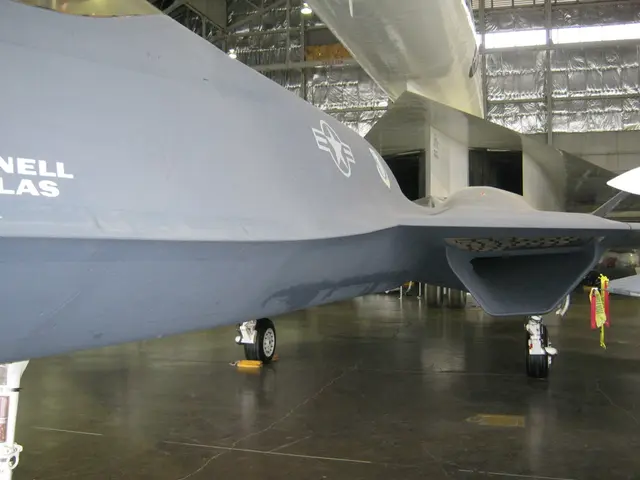Competing to Successfully Deploy the Successor of the ISS: Four Prominent European and American Startups at the Forefront of the Upcoming Space Revolution
In a significant step towards the post-International Space Station (ISS) era, several ambitious European startups showcased their projects for the next generation of commercial space stations and orbital vehicles at the 2025 Paris Air Show. These projects aim to fill the anticipated infrastructure gap when NASA decommissions the ISS by 2030, focusing on human habitation, scientific research, manufacturing, and commercial missions in low Earth orbit (LEO).
California-based VAST is developing Haven-1, a cylindrical orbital module designed for up to four crew members for missions lasting up to 30 days. Scheduled for launch via SpaceX Falcon 9 in 2025 or as early as May 2026, Haven-1 offers approximately 80 m³ of habitable volume, a docking port compatible with SpaceX's Crew Dragon, 1,000 W power capacity, and 150 kg of pre-loaded cargo. It also includes dedicated payload slots for science experiments, supporting biological and agricultural research such as plant growth in microgravity. VAST is collaborating closely with NASA and ESA under NASA's Commercial LEO Destinations initiative, aiming to provide a modular alternative to the ISS.
The Exploration Company presented their Nyx orbital vehicle, a compact space capsule designed for crew transport and science missions. Details were highlighted at the Paris Air Show as part of the emerging ecosystem of commercial stations, focusing on rapid testing and cargo return.
Parisian newcomer Alatyr showcased its orbital habitat concepts, offering hybrid stations that blend human habitation with commercial and scientific applications in LEO. Alatyr's mini-station is designed for biotech and life-science experiments.
French startup Andromach, another emerging player, emphasised commercial viability with innovations supporting microgravity science and manufacturing. Their offering, an orbital vehicle, assembles proven technology into something that doesn't yet exist, with no commercial equivalent in the US or China, according to co-founder Hugo Verjus.
These companies represent a broad and diverse approach to filling the infrastructure gap that will arise after the ISS deorbits, ranging from full-fledged multi-crew habitats like VAST's Haven-1 to smaller capsules and specialized modules from The Exploration Company, Alatyr, and Andromach. Their participation at the Paris Air Show's dedicated space exhibitions, including the Paris Space Hub, underscores Europe's and the global aerospace community's commitment to fostering sovereign and cost-effective space platforms in coordination with agencies like NASA, ESA, and CNES.
| Company | Project | Type | Key Features | Launch Target | |----------------------|----------------|------------------------|-------------------------------------------------------------------|------------------| | VAST | Haven-1 | Cylindrical Space Station | 4 crew, 30-day missions, 80 m³ habitable volume, Crew Dragon dock, science payloads | 2025/May 2026 | | The Exploration Company | Nyx | Compact Crew Capsule | Crew transport, science-focused, rapid testing | Showcased in 2025 | | Alatyr | Orbital Habitat | Hybrid/Modular Station | Human habitation and commercial/scientific use | Showcased in 2025 | | Andromach | Orbital Vehicle | Commercial Orbital Vehicle | Microgravity science and manufacturing focus | Showcased in 2025 |
These efforts collectively aim to ensure continuous access and utilization of low Earth orbit infrastructures essential for advancing science, technology, and commercial space activities beyond the ISS era. The mini-station has an annual resupply capacity of 1-1.5 tonnes.
- VAST's Haven-1, set to launch via SpaceX Falcon 9 in 2025, is a cylindrical orbital module that boasts approximately 80 m³ of habitable volume and a docking port compatible with SpaceX's Crew Dragon.
- The Exploration Company's Nyx orbital vehicle, exhibited at the Paris Air Show, is a compact space capsule designed for crew transport and science missions focusing on rapid testing and cargo return.
- Parisian newcomer Alatyr showcased its orbital habitat concepts, offering hybrid stations that integrate human habitation, commercial, and scientific applications in low Earth orbit, particularly for biotech and life-science experiments.
- French startup Andromach, another emerging player, highlights commercial viability with innovations supporting microgravity science and manufacturing, assembling proven technology into an orbital vehicle with no commercial equivalent in the US or China.
- European startups, such as these displaying at the 2025 Paris Air Show, are collectively working on projects that aim to ensure continuous access to low Earth orbit systems, fostering advancements in science, technology, and commerce post-ISS era.








